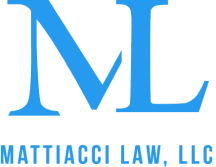
Author: John Mattiacci | Owner Mattiacci Law
Published September 29, 2025

Table of Contents
ToggleIf you’ve been struck by a vehicle as a pedestrian, you may be wondering Who has the right of way at a Crosswalk?
Drivers must yield to pedestrians in marked and unmarked crosswalks when signals are not operating, and pedestrians must obey signals and use care when crossing mid block; fault depends on the best evidence available.
Having recovered tens of millions for clients over decades of advocacy across PA and NJ, I’ve seen firsthand how every case is unique. For a complimentary, no-obligation review of your specific situation, contact an experienced Pennsylvania personal injury attorney at 215-914-6919. In this article, I’ll explain the rules, what evidence matters most, and practical steps to protect your settlement value.
What Is a Crosswalk and Right of Way
A crosswalk is any part of the roadway set aside for pedestrian crossing. In Pennsylvania, a crosswalk can be painted or unmarked at intersections where sidewalks continue across the street. Right of way refers to who must yield. Drivers must yield to pedestrians in crosswalks when signals are not operating, while pedestrians must follow signals and avoid sudden entries into traffic.
Why Crosswalk Rules Matter to Your Claim
Crosswalk rules shape liability and negotiation leverage. If an insurer believes you stepped into traffic against a signal, they will reduce value. When video and witness statements show a driver failed to yield or sped through a turning movement, fault shifts the other way and settlement ranges improve. Early, organized proof keeps your percentage of fault low.
What Steps Should You Take After a Crosswalk Crash
1. Get same day medical care and follow through. Timely care connects your symptoms to the impact and avoids gaps.
2. Call police and request a formal report. Ask about nearby cameras, body‑cam footage, and 911 audio to lock in facts.
3. Send preservation letters to stores, transit, and property owners within 24 hours. Many systems overwrite in days.
4. Photograph the scene from multiple angles. Capture lane markings, signal status, and sight‑lines for drivers and pedestrians.
5. Collect witness contacts and brief statements. Even a few lines on speed or signal obedience can decide fault.
6. Organize medical proof weekly. Keep diagnoses, imaging, therapy notes, and work restrictions together.
7. Open UM or UIM claims when needed. Stacking and household coverage can increase available limits.
8. Avoid recorded statements until records are complete. Provide written facts first so details stay consistent.
9. Anchor negotiations with comparable outcomes. Use similar injuries and treatment arcs to set a fair range.
10. File suit before deadlines if offers stay low. Filing preserves rights and often improves the seriousness of talks.
What Options Help When Fault Is Disputed
- Independent video sources such as bus, store, and rideshare footage that capture signal phases and turning movements.
- Driver phone data, event recorder logs, and vehicle repair estimates that show speed, braking, or impact points.
- Coverage beyond the driver’s policy, including household uninsured or underinsured motorist benefits when limits are small.
Pennsylvania Crosswalk Specifics That Decide Cases
Under state law, drivers must yield to pedestrians in marked and unmarked crosswalks when signals are not operating. Pedestrians must obey walk signals and cannot suddenly leave a curb and step into the path of a vehicle that is so close it is impossible to stop. Mid block crossings require pedestrians to yield, but drivers still must use due care to avoid a collision.
Review the statutes: 75 Pa.C.S. § 3542 crosswalk right of way 75 Pa.C.S. § 3543 crossing outside crosswalks
For safety practices frequently referenced in claims, see PennDOT pedestrian safety
Insurer Pushbacks and the Counter Evidence That Works
Common pushbacks include claims that you walked against the signal, wore dark clothing, or could have avoided the impact. I counter with signal‑timing data, visibility photos, and speed‑distance analysis. If body‑cam shows driver admission of distraction or a rolling right turn, that often resolves fault disputes quickly.
Documentation Doctors and Adjusters Accept
Adjusters pay attention when your file is clean. Include ICD‑10 diagnoses, imaging reports, therapy notes, and a brief provider opinion on causation and work impact. Pharmacy histories and itemized bills prove both treatment and cost. I remove unrelated charges so the number is defensible.
Timeline to Resolution and Common Delays
Many crosswalk claims resolve within nine to eighteen months, depending on treatment and limits. Delays come from slow medical records, disputes over pre‑existing conditions, or waiting on a specialist opinion. I run a two‑week records schedule and request clarifying letters to keep things moving.
Decision Framework if Offers Are Low
If liability is accepted but the number is low, we expand medical support and wage proof and present comparable verdicts. If liability is disputed, I file suit and use subpoenas for video and phone data. When limits are small, we evaluate UM and UIM layers to reach a fair result.
How Different Crosswalk Situations Compare
Use this reference to see how common crosswalk scenarios differ in proof needs and negotiation leverage.
| Crosswalk Situation | Legal Right of Way | Proof That Shifts Fault |
|---|---|---|
| Marked Crosswalk, No Signal | Driver must yield to pedestrian | Video, eyewitnesses, photos of skid marks or no braking |
| Marked Crosswalk, Active Signal | Pedestrian must obey signal | Signal timing, body-cam footage, admissions or distractions |
| Unmarked Crosswalk at Intersection | Driver must yield when signals are not operating | Intersection layout, sight-line photos, turning movement videos |
| Mid-Block Crossing | Pedestrian must yield to vehicles | Driver speed, lighting conditions, reflective gear or visibility |
| Sudden Entry Into Roadway | Driver not liable if unable to stop in time | Crash reconstruction, dash cam, 911 timing and location data |
Get Clear Guidance and Momentum on Your Crosswalk Claim
A crosswalk crash can derail work and family life. In week one I send preservation letters, map nearby cameras, and order targeted medical records so your story is documented before anything disappears. You’ll get weekly check‑ins and my direct number for quick questions. We will review the police report, treatment plan, and coverage together and set a clear 30‑day roadmap. When an offer arrives, I show you the math behind it and the leverage points to improve it. No pressure—just practical steps that get results. Start with Philadelphia personal injury attorney services or call 215-914-6919 for a free, no-obligation case review.
Resources
- 75 Pa.C.S. § 3542 crosswalk right of way
- 75 Pa.C.S. § 3543 crossing outside crosswalks
- PennDOT pedestrian safety
- NHTSA pedestrian safety
Further Reading
- Pennsylvania pedestrian laws
- Comparative negligence in Pennsylvania
- How to obtain Pennsylvania accident reports
- Assured Clear Distance Rule in Pennsylvania
